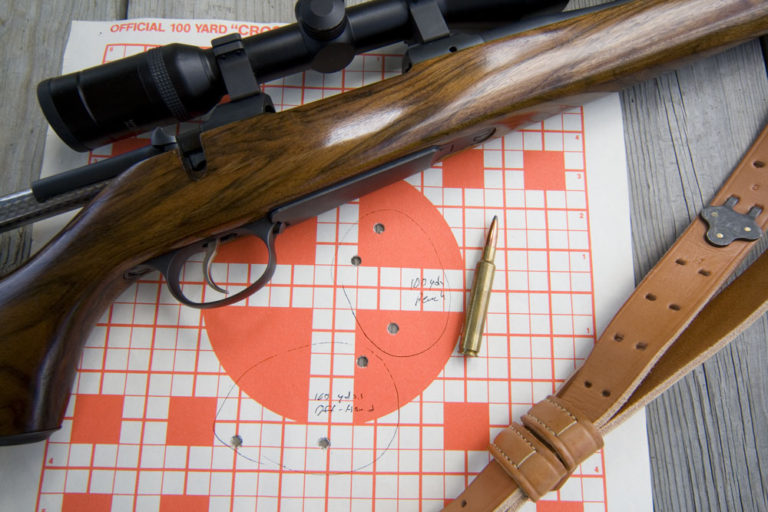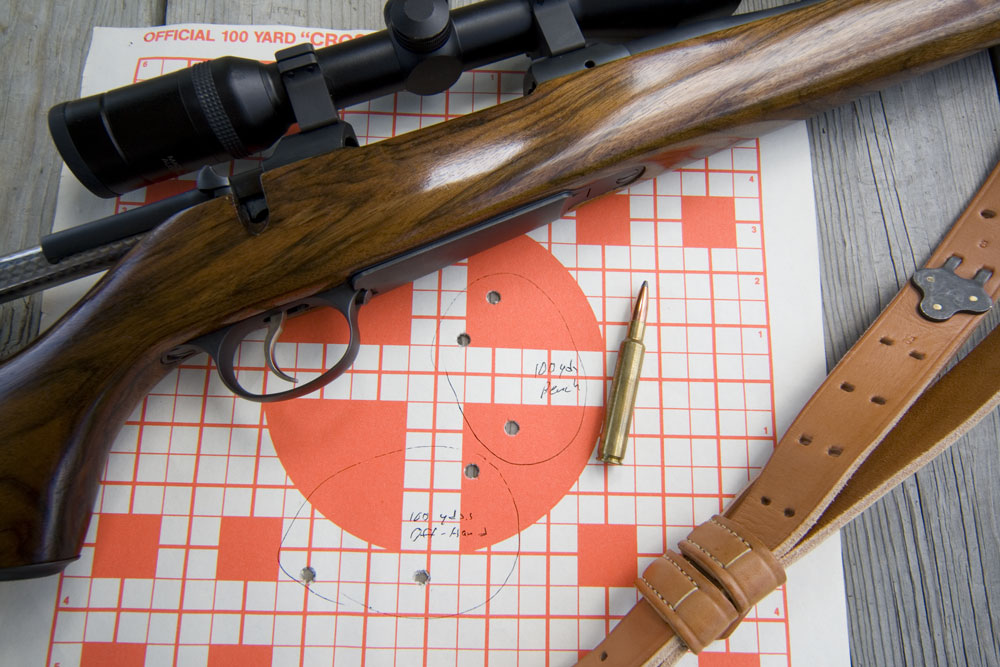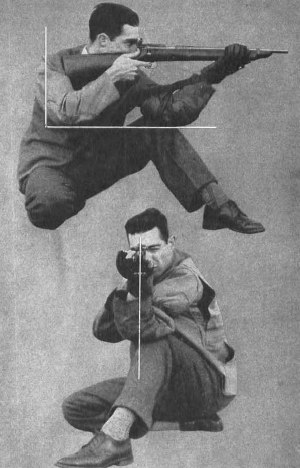

Hang around the Gun Digest offices long enough and eventually you begin to daydream about obscure topics that surely would strike most normal people as odd. Reading old issues of the Gun Digest only fuels the fire. As such, my thoughts have recently begun to drift toward — what else? — the military leather sling.
There are practical reasons for this, namely the realization that my shooting skills are not up to snuff. I officially blame today's gear — bipods, custom rests, shooting sticks, “lead sleds” and other such things — designed to anchor your firearm in what amounts to a vice, so all you have to do is pull the trigger and watch as rounds pile into a nice, tiny little group. But convenience comes with a price. And while each of these shooting accessories have their place, I have only myself to blame for allowing them to become a crutch.
If you don't believe me, grab your rifle while standing or kneeling and peer through the scope at a 100-yard target. Watch with horror as your crosshairs sway to and fro, on the target and off again. In my case, it's as if they were being guided by a drunk sailor bumbling across the deck of a ship in rough seas. Actually, it's amazing I've ever managed to fill any deer tag. When I recently tried this exercise, the phrase “Minute of Cardboard” (which was an improvement over “Minute of Dump Truck”) came to mind, aptly coined in what ended up being a transparent attempt to add some level of dignity to my gross ineptitude with a rifle.
The military, and the Civilian Marksmanship Program (CMP), both teach good old-fashioned marksmanship skills, and the leather sling is still a cornerstone in the technique. In the decade or so following World War II, there seems to have been more focus placed on practical rifle shooting skills and the use of the leather sling in particular than there is in today's shooting press. For example, the 1950 4th Edition of the Gun Digest contains an article by C. M. Palmer, Jr. which well-represents this “old school” way of thinking. In How to Shoot a Target Rifle, Palmer writes:
The important function of the sling is that of making the shooter and his rifle an inseparable and unbeatable combination. It ties the two together literally, and holds them together rigidly in the proper shooting positions. Getting into the sling is simple though some people make a mess of it without half trying.

I wasn't half trying when I made a mess of it; no, I'd put all my heart into it (and a dandy mess it was). Try to imagine a dysfunctional ex-zoo monkey trying to solve a rubix cube dipped in grease from a deep-fryer. It was not pretty. You would think that a sling would be a simple thing to master. But the military leather variety, to the uninitiated, seems like a cruel trick. There are two sections, one loop, two keepers, two metal hooks (known as “frogs,” just to make things interesting), and dozens of sets of holes. To make matters worse, when the sling is new the leather is so stiff the frogs won't “go” into the holes without considerable pushing, pulling and tugging — heaving with eye-popping force the likes of which elicits the most God-awful grunting noises you have ever heard coming from a gun room. If you have close neighbors, it is best to close the windows, and wear safety glasses, when doing this.
After my leather sling arrived from the folks at Turner Saddlery, staring at this wonder of modern engineering left me thinking, “How hard can this possibly be?” The question answered itself. With a little practice, though, some help from M/Sgt. James R. Owens USMC (Ret.) and his swell little pamphlet, The Leather Sling and Shooting Positions, advice from old issues of Gun Digest to stoke the dream and I was off to the range on a wing and a prayer. Even more comical than mastery of the sling itself is the act of getting into the thing and then into one of the four shooting positions — standing, kneeling, sitting and prone — which sounds easy enough but actually requires much practice and patience.
The key is to use the sling and the bone structure of the body, together. Palmer explains:
These positions have been studied carefully after many years of shooting experience. They are scientifically and mechanically correct to give the shooter the greatest possible support with the minimum of muscular effort. They aim to utilize the rigidity of the bones to hold the weapon rather than the uncertainty of the muscles. The best shooting position is that which transforms the shooter into a solid gun mount.
Most shooters spend their entire time shooting from a bench chasing after smaller and smaller groups. Your rifle's actual accuracy (more properly described as precision) will always be better than your field-shooting accuracy, or off-hand ability. Thus, more time spent learning the military leather sling and off-hand shooting positions will reap big rewards in the game fields or tactical environments where fast shooting may be the only option.
So how did it work? At first I felt fortunate to get pie-plate sized groups at 100 yards off-hand. But by locking into the leather sling (technically I was using a variant position known as the “hasty” sling), my groups tigthened right down to around four inches — a marked improvement over shooting without the sling.
The bottom line is this: Rely too much on mechanical gun rests, rather than honing the shooting discipline, and your ability to place rounds on target in real-life scenarios will suffer. Like Clint Smith of Thunder Ranch says, You won't shoot better under stress, you'll shoot worse. So yank that rifle out of its vice, wrap arm in leather, and get to work.

Next Step: Get your FREE Printable Target Pack
Enhance your shooting precision with our 62 MOA Targets, perfect for rifles and handguns. Crafted in collaboration with Storm Tactical for accuracy and versatility.
Subscribe to the Gun Digest email newsletter and get your downloadable target pack sent straight to your inbox. Stay updated with the latest firearms info in the industry.

![Best Concealed Carry Guns In 2025 [Field Tested] Wilson Combat EDC X9S 1](https://gundigest.com/wp-content/uploads/Wilson-Combat-EDC-X9S-1-324x160.jpg)


![Best 9mm Carbine: Affordable PCCs [Tested] Ruger Carbine Shooting](https://gundigest.com/wp-content/uploads/Ruger-Carbine-Shooting-100x70.jpg)
![Best AR-15: Top Options Available Today [Field Tested] Harrington and Richardson PSA XM177E2 feature](https://gundigest.com/wp-content/uploads/Harrington-and-Richardson-PSA-XM177E2-feature-100x70.jpg)
